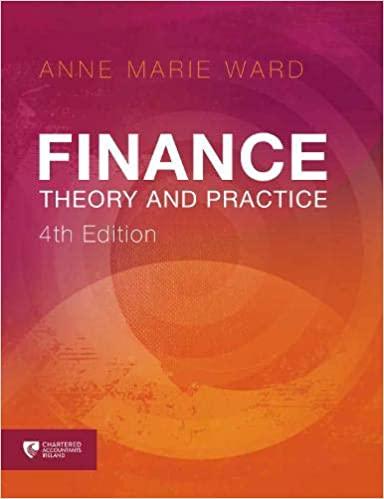Question
Loan Amortization Using the Loan Amortization Schedule on the excel sheet, respond to the following questions. Loan 1: Principal borrowed: $100,000 Total Payments: 30 years
Loan Amortization
Using the Loan Amortization Schedule on the excel sheet, respond to the following questions.
Loan 1:
Principal borrowed: $100,000
Total Payments: 30 years (360)
Annual interest rate= 5%
Start date of the loan: 1/1/2020
1. What is the monthly payment (Principal and interest)?
2. What is the total interest paid?
3. Total of 360 Payments?
4. At what payment number does the amount going to the actual principle exceed the amount allocated toward paying interest?
Loan 2:
Principal borrowed: $250,000
Total payments: 15 years (180 months)
Interest rate= 7%
Start date of the loan: 1/1/2020
1. What is the monthly payment (Principal and interest)?
2. When making payment number 24, how much of your payment is going toward interest?
3. After paying on the loan for 5 years, you have made 60 payments. When you make your 61st payment, is at least half of your payment going toward paying down the principal of the loan?
Now, using the NPV and IRR Calculator tab on the excel sheet, enter the following information, and respond to the following questions:
This type of document can be used to evaluate capital projects that are going to be depreciated over a specific period of time, in this case, 7 years. Your initial investment is always a negative number, because it is money that is going out to purchase the required items for the project.
The IRR (internal rate of return) is then compared against the cost of capital. The cost of capital can be looked at as your benchmark to approve this project. The number represents the amount of money you truly make once you discount the future cash flows. For our purposes here, if the IRR of your project is less than what you could make with investments, you should reject the project.
Investment: $500,000 (remember, this is cash spent, so it needs to be entered as a negative number)
Cash Flows: $100,000 each year for 7 years
Cost of Capital: 11%
1. What is the NPV of this project? Would you approve it?
2. What is the IRR?
Now, change the Cost of Capital to 8%
3. Explain in no more than 150 words, why the IRR stays the same, but the NPV is now positive?
Step by Step Solution
There are 3 Steps involved in it
Step: 1

Get Instant Access to Expert-Tailored Solutions
See step-by-step solutions with expert insights and AI powered tools for academic success
Step: 2

Step: 3

Ace Your Homework with AI
Get the answers you need in no time with our AI-driven, step-by-step assistance
Get Started


